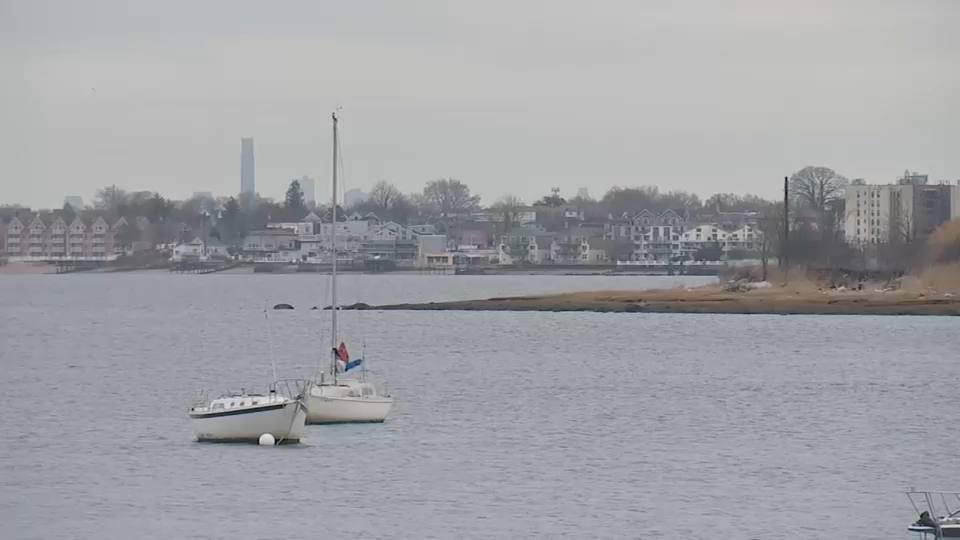Governor Cuomo pushes for Gateway Tunnel Project funding in Washington after tunnel tour

NEW YORK (WABC) -- Governor Andrew Cuomo hopes video images of the decaying, century-old rail tunnel under the Hudson River will help resolve a funding impasse with President Donald Trump's administration that has delayed construction of a new $13 billion tube considered crucial to the region's transportation system.
Cuomo toured the transit tunnel Wednesday night, taking video he says will be shown to Trump in an effort to secure money for the Gateway Tunnel Project. The governor is calling on Trump and Washington to stop playing politics and fund their share of the repairs, which could help ease transit troubles across the Tri-State area.
As water dripped down the leaky tunnel's walls, forming puddles, the cameras captured disintegrating and missing concrete panels, corroding rebar and broken electrical cables. When it gets cold enough, icicles grow from the ceiling. Chunks of concrete can break off and fall onto the tracks below or threaten the cable running along the top.
"I actually think if anything is going to convince the president, seeing is believing," Cuomo said. "He actually has a construction background and I think if he sees the level of damage and he sees what we're talking about, eroding steel, falling concrete, that he'll see it in a different context, that it will strip away the politics and the rhetoric and the jockeying."
The two-tube tunnel, which serves as the only rail connection between New York City and New Jersey, suffered saltwater damage from Superstorm Sandy in 2012 that is eating away at walls housing copper cables and electrical wires. Amtrak, which owns the tunnels, has estimated one or both of the tunnel tubes could fail in the next 10 to 15 years.
During Sandy, both tubes in the North River Tunnel were inundated with seawater, causing falling concrete, corroded electrical cabling and standing water damage. The damage has been compounded by the tunnel's age and the intensity of its current use.
New York and New Jersey have committed to pay for half the cost of building a new tunnel using federal loans, with New Jersey proposing to pay back its share with fare increases and New York proposing to allocate money annually from its state budget over 35 years. The Port Authority of New York and New Jersey has committed roughly $2 billion.
Half of the funding for the Gateway Tunnel was promised under the Obama administration, but Trump administration officials have rejected the 50-50 agreement that would have the federal government pay for the other half, calling it "nonexistent."
Cuomo says the current conditions could lead to major regional issues for the 450 trains and the passengers who use it every day.
"You have a level of damage that is possible to interrupt service for days," he said. "And if you lose service of one of these tunnels for one, two, or three days, you're talking about a devastating impact on the whole Northeast Corridor."
Taking one of the tubes out of service for an extended time would reduce peak period traffic by 75 percent, experts have said. That would have a ripple effect up and down the Washington-to-Boston corridor on which more than 700,000 people ride daily on Amtrak and several commuter lines, Amtrak has estimated.
Transportation Secretary Elaine Chao told a House committee in March that Trump was seeking to kill the tunnel project unless the states committed more money. And the Federal Transit Administration has downgraded the project's rating from medium-high to medium-low, making it more difficult to compete with other projects around the country seeking federal dollars.
Last month, two commuter trains were disabled on a Friday night, stranding more than 1,000 travelers, when a piece of metal that connects the train to the overhead wires pierced the roof of one of the train cars. No injuries were reported.
"What's really going on inside the tunnels is a toxic stew of sandy saltwater, of normal water intrusion, of the metal corrosion that's going on, and of the aging process of the cement," said Port Authority Executive Director Rick Cotton, who joined Wednesday's tour.
Even once the funding is secured, it would take seven to eight years to complete the project. That is why Cuomo says time is of the essence, and he hopes the president will look beyond politics.
(The Associated Press contributed to this report)
----------






